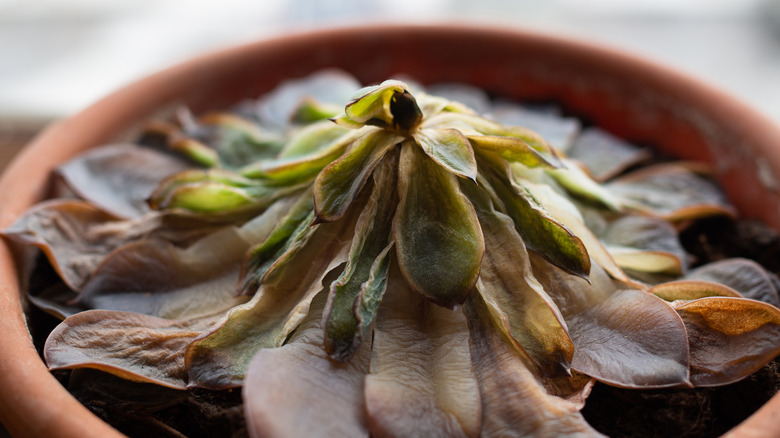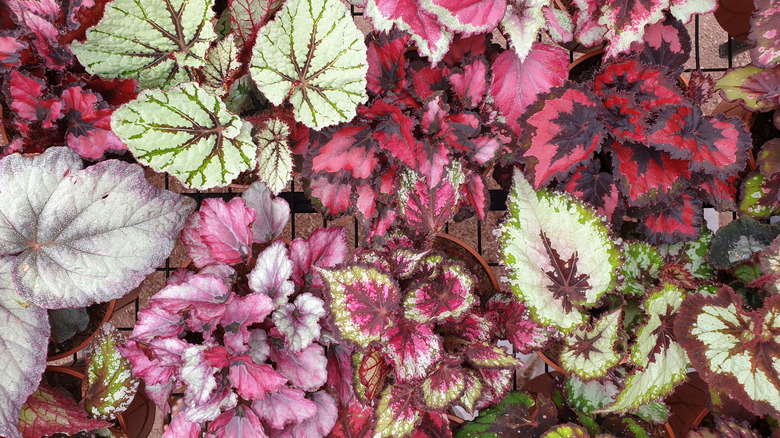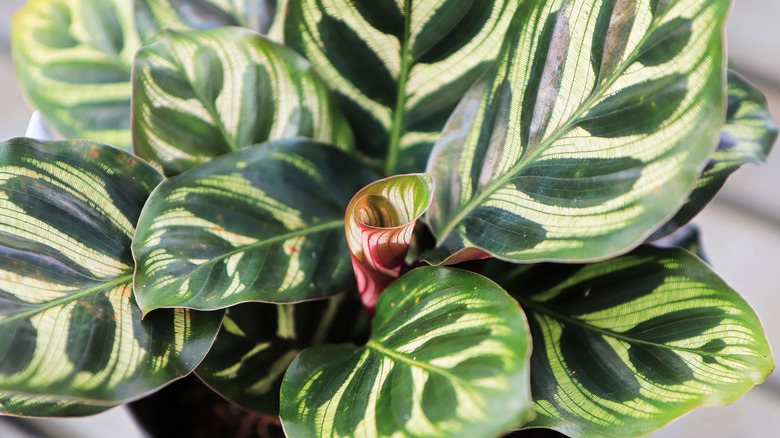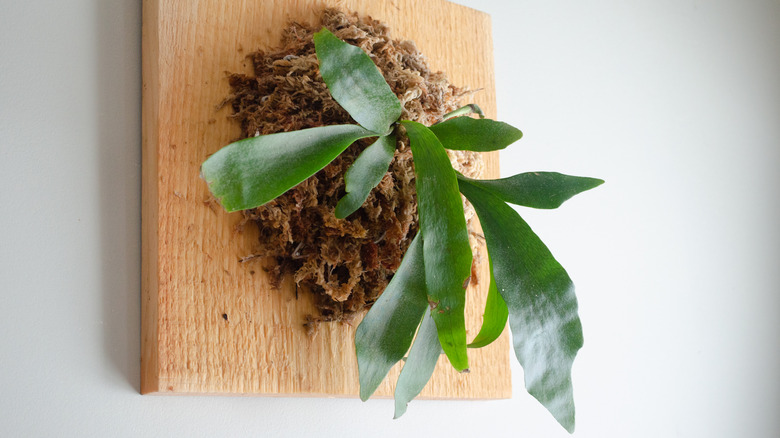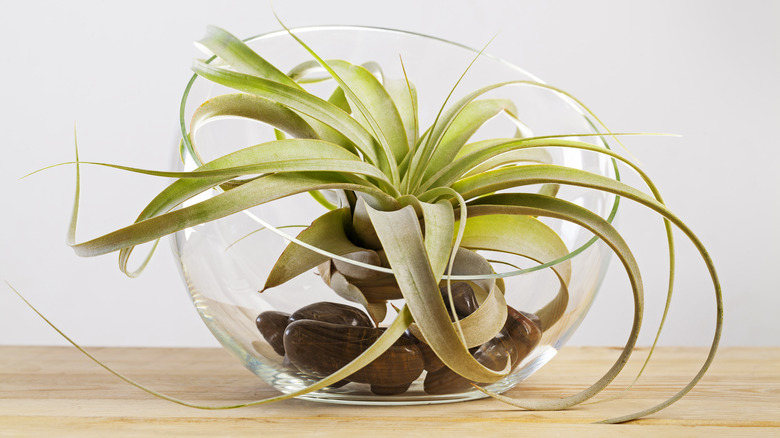4 Gorgeous Alternatives To Succulents Because They're Overrated, From Our Master Gardener
It is so tempting to treat yourself when you see a display of succulents at the local plant nursery, garden center, or even the grocery store. After all, succulents are often touted as low-maintenance plants, almost impossible to kill. This can be true as long as you have lots of natural light, the ideal humidity level, and never over or under water. It's that last requirement that always gets us. Succulents do not want water — until they do, but when they show signs of distress, it's often too late. The reason we love succulents is because there are so many interesting shapes, colors, and textures. Thankfully, we can get the same dramatic effect with plants that are easier to grow.
There is no official succulent family of plants. In fact, succulents are part of more than 60 families, so rather than being defined by their scientific names, these plants are considered succulents because of their attributes. The term succulent is used for plants with thick, fleshy leaves that retain water. Aloe vera, snake plant, and hoyas are all considered succulents. While some of these types of plants are easier to grow than others, here are some alternatives that may be a better option based on the aesthetic you want and your indoor growing conditions.
Add beautiful color
To add stunning color combined with fascinating leaf patterns, you cannot go wrong with one of the many species of rex begonias. These gorgeous houseplants feature either teardrop-shaped or round leaves, some of which taper to a spiral at the base. There are even cultivars of rex begonias with leaves that are curled like a snail's shell. While the patterns would be fascinating in simple hues, the true glory of these plants is their vibrant colors. Among the options available are shades of purple, red, and silver. Even green rex begonias offer a stunning contrast of tones between the leaves and veins.
Such an exotic-looking plant should be difficult to grow, but begonias are wonderfully low-maintenance. While you'll get the most vibrant colors in a space with bright, indirect sun, they still perform well in lower-light conditions. All they need is good quality potting soil in a planter with sufficient drainage and some water when the surface of the soil is dry.
For low-light conditions
Why buy a succulent that just sits there doing nothing when you can have an interesting plant that actually moves throughout the day? Calathea plants are also sometimes called prayer plants because their leaves fold up at night, resembling hands pressed together. They are closely related to the genus Maranranta, which are also commonly referred to as prayer plants. Both plant groups make a lovely addition to the home. Calatheas come in a variety of leaf shapes and colors with tones of green and purple. Some varieties have bright green veins, while others feature stripes and other shapes.
Calatheas can be a little fussy about their living situation, but when you find the sweet spot, they will reward you with stunning visual texture. These plants are tropical and grow best in a space with low to medium light and consistently moist soil. When they are unhappy, their leaves curl, signaling they need a change in environment.
Provide interesting texture
Staghorn ferns (Platycerium bifurcatum) are tropical understory plants featuring large, fuzzy leaves that resemble the shape of a stag, hence the name. Staghorn ferns are hanging plants that can be grown in potting soil but are more likely to thrive attached to a piece of wood. As an epiphyte, these plants draw moisture and nutrients from the air and the trees on which they grow in a symbiotic relationship. As a houseplant, they are usually mounted on wood with wire or string, surrounded by sphagnum moss, making them a unique addition to your home.
Staghorn ferns do not require a lot of maintenance. Place your hanging work of living art in an area with bright, indirect sunlight and spritz the growing medium with liquid fertilizer about once a month. You can also sprinkle slow-release fertilizer into the growing medium to keep your staghorn fern consistently fed. Keep the growing medium consistently moist and mist as needed to provide extra humidity.
Fill a small space
Many people buy succulents to bring an interesting touch of life to a small space. An easier option with very few growing requirements is the air plant (Tillandsia spp.). These little plants are so low maintenance that they don't even need soil. Like staghorn ferns, air plants are epiphytes, so they get their moisture from their surroundings. There are several types of air plants that come in different colors. Some are dark green, while others are nearly white. There are thin, spiky options and others with thicker leaves. If you want to fill a small space with something truly interesting, consider an air plant — or several.
Perhaps the best part of air plants is you don't have to worry about the right potting medium or fertilization. They aren't even particular about sunlight, as they grow well in low- to bright-light conditions. To water your air plant, just dunk it in a cup of water for about 30 minutes once a week.
